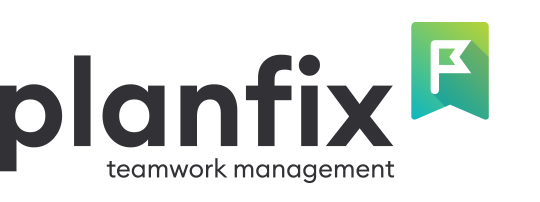
- What Is Construction Project Management Software and Why Do You Need It?
- How to Choose the Right Construction Project Management Software
- 1. Planfix
- 2. Clickup
- 3. Smartsheet
- 4. Procore
- 5. Buildertrend
- 6. CoConstruct
- 7. Contractor Foreman
- 8. Fieldwire
- 9. Autodesk Construction Cloud
- 10. Monday.com
- Benefits of Construction Project Management Software
- FAQ
The construction industry is one of the most complex and demanding sectors, requiring meticulous planning, coordination, and execution. With multiple stakeholders, tight deadlines, and ever-changing project requirements, managing construction projects can be a daunting task. This is where construction project management software comes into play. These tools are designed to streamline workflows, improve communication, and ensure that projects are completed on time and within budget.
In this guide, we’ll dive into the best options available and explore how these tools can transform your construction business. From project planning to resource allocation, we’ve got you covered with a detailed look at features, pricing, and more. Whether you’re a small contractor or a large construction firm, this guide will help you find the right tool to manage your projects effectively.
What Is Construction Project Management Software and Why Do You Need It?
Construction project management software is a specialized tool designed to help construction professionals plan, execute, and monitor projects efficiently. It offers features like task management, scheduling, resource allocation, budgeting, and document management, all tailored to the unique needs of the construction industry. Let’s break down what it is and why it’s essential for your construction business.
- Definition: Construction project management software is a specialized platform that helps plan, coordinate, and execute building projects, tailored to the unique demands of the construction industry.
- Core Purpose: It centralizes tasks, communication, and documents, replacing scattered spreadsheets and emails with a unified system.
- Industry Fit: Unlike generic tools, it tackles construction-specific challenges like subcontractor coordination, site logistics, and regulatory compliance.
- Time Savings: Automates repetitive tasks — think scheduling or progress updates—freeing you to focus on the build itself.
- Error Reduction: Keeps everyone on the same page with real-time data, cutting down on costly miscommunication or rework.
- Profit Boost: By streamlining workflows and tracking costs, it helps keep projects under budget and ahead of schedule.
In short, construction management software isn’t a luxury — it’s a necessity for staying competitive. From small contractors to large firms, it’s the backbone that supports efficient project management for construction projects, ensuring deadlines are met and clients are satisfied.
How to Choose the Right Construction Project Management Software
Picking the perfect project management software for construction isn’t about grabbing the shiniest option — it’s about finding what fits your crew, projects, and goals. With so many tools out there, the decision can feel overwhelming, but it doesn’t have to be. Here’s a practical guide to narrowing down your choices and landing on the best construction management software for your needs.
- Assess Your Needs: Identify must-haves—do you need robust scheduling, document control, or mobile access for field teams?
- Team Size Matters: A solo contractor has different demands than a 50-person firm; ensure the tool scales with your crew.
- Project Complexity: Simple remodels might need basic features, while commercial builds demand advanced reporting or BIM integration.
- Integration Check: Look for software that syncs with tools you already use, like email, accounting, or design platforms.
- Ease of Use: Construction teams don’t have time for steep learning curves—opt for intuitive interfaces that click fast.
- Budget Fit: Balance cost with value; free tiers work for small setups, but growing firms might need paid plans with more power.
Once you’ve weighed these factors, test-drive your top picks — most offer trials or demos. The right project management software for the construction industry should feel like an extension of your workflow, not a hurdle, helping you build smarter and faster. With these factors in mind, let’s explore the top 10 options.
1. Planfix

Source: https://planfix.com/
Planfix is a versatile platform that empowers construction companies to tailor project management to their specific workflows. While it doesn’t offer a pre-built construction solution, its flexibility makes it a standout choice for builders who want control over their processes. With tools for project tracking, client management, and document handling, Planfix adapts to the needs of construction industry management software users, from small contractors to larger firms.
Planfix Features
Planfix provides a robust set of tools that can be customized for construction project management. Its adaptability is its strength, allowing users to build a system that fits their unique needs. Here’s what it brings to the table:
- Project Management: Create and manage tasks, set deadlines, and assign them to team members or subcontractors for seamless project coordination.
- Client Database Management: Store client info, track interactions, and link projects to customer profiles for a CRM-like experience.
- Document Workflow: Upload, version, and attach documents to tasks or clients, ensuring all blueprints and contracts are organized.
- Integration Options: Sync with corporate email, messengers (e.g., Slack, Telegram), and other tools to keep communication flowing.
- Reporting Tools: Generate custom reports, including schedule-based insights, to monitor project progress and team performance.
- Task Automation: Set up recurring tasks or notifications to keep projects moving without manual oversight.
For construction professionals, Planfix shines in its ability to mold to specific workflows. Need a dashboard for tracking material deliveries? You can build it. Want to tie RFIs (Requests for Information) to specific project stages? It’s doable. The platform’s document versioning ensures everyone’s working from the latest plans, a critical feature for construction project tracking software. Its integration with communication tools bridges the gap between office and field teams, while reporting keeps managers informed without drowning them in spreadsheets.
Planfix Pros and Cons
Planfix offers several advantages for those willing to invest time in setup. Its flexibility is a major draw for construction management project software users.
Pros
- Highly customizable to match unique construction workflows.
- Strong document management with versioning keeps plans current.
- Integrates with email and messengers for real-time updates.
- Client management doubles as a lightweight CRM tool.
- Detailed reporting helps track schedules and budgets.
- Scalable for teams of any size, from solo contractors to large firms.
Cons
- Requires setup time to tailor it to construction needs.
- No pre-built construction templates out of the box.
- Learning curve may slow adoption for less tech-savvy teams.
- Automation options are basic without advanced configuration.
- May feel overwhelming for very small projects.
Planfix is a versatile project management tool that, while not specifically designed for the construction industry, offers a robust set of features that can be tailored to meet the needs of construction professionals.
Planfix Pricing & Free Version
Planfix offers a free tier for up to 5 users, including basic task management and document storage — ideal for small contractors testing the waters. Paid plans start at $5 per user/month, unlocking advanced integrations, reporting, and unlimited projects, making it a cost-effective choice for growing construction firms.
2. Clickup
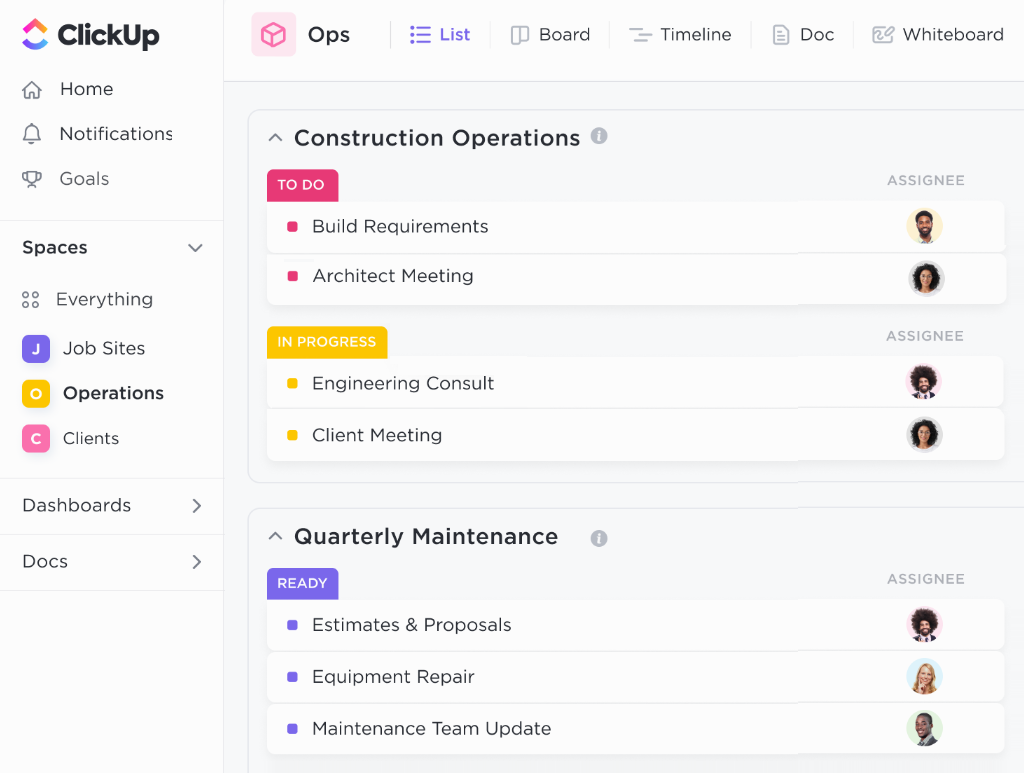
Source: https://clickup.com/
ClickUp is a versatile contender among project management software for construction projects, known for its all-in-one approach to task and team coordination. It combines a customizable interface with a wide range of features, making it appealing to construction teams who need flexibility without industry-specific constraints. ClickUp is widely adopted by builders and contractors seeking an accessible way to manage workflows and schedules.
Clickup Overview and Features
ClickUp stands out as a robust option in the realm of construction management software, offering tools that can be tailored to the needs of building projects. Its adaptable design is easy to navigate, providing a practical solution for project management in construction projects. Here’s what ClickUp brings to the table:
- Task Management: Break down projects into tasks with assignees, due dates, and priorities, ideal for tracking construction phases.
- Multiple Views: Switch between Gantt charts, Kanban boards, or lists to visualize progress across job sites.
- Docs: Create and edit collaborative documents for plans, specs, or meeting notes, centralizing key information.
- Time Tracking: Log hours spent on-site or in planning, a handy feature for labor cost management.
- Goals: Set and monitor project milestones, like “Foundation Complete,” to keep teams aligned.
- Integrations: Connect with tools like Slack, Google Drive, and Microsoft 365 for seamless workflow syncing.
ClickUp’s strength lies in its adaptability, making it a solid pick among project management tools for construction. The variety of views offers flexibility for different planning styles, while integrations keep communication flowing between office and field teams. It’s a platform that bridges general-purpose functionality with the demands of construction project tracking software.
Clickup Pros and Cons
ClickUp delivers a balanced set of features with some trade-offs. Here’s a breakdown of its advantages and limitations:
Pros
- Free plan is generous, offering unlimited tasks and users for small construction teams.
- Multiple views (Gantt, Kanban) cater to diverse planning needs on building sites.
- Time tracking helps monitor crew hours and project costs effectively.
- Collaborative docs streamline updates and document sharing among teams.
- Highly customizable, allowing tailored setups for construction workflows.
- Affordable paid tiers unlock advanced features for growing firms.
Cons
- Lacks native construction-specific tools like change order tracking or daily logs.
- Free plan limits storage to 100MB, which can fill up fast with project files.
- Interface may feel complex for simple construction tasks or smaller crews.
- No built-in daily reporting tailored to on-site needs.
- Advanced features (e.g., automation) require paid upgrades.
- Setup time needed to optimize for construction management.
These points showcase ClickUp’s strengths as a flexible tool for project management for building construction and its boundaries for industry-specific demands.
Clickup Pricing & Free Version
ClickUp’s free plan includes unlimited tasks and users with basic features, making it a compelling choice among free project management software for construction. Paid plans start at $7 per user/month, adding unlimited storage, advanced reporting, and enhanced automation—ideal for scaling construction teams. It’s a budget-friendly option among apps for construction project management.
3. Smartsheet
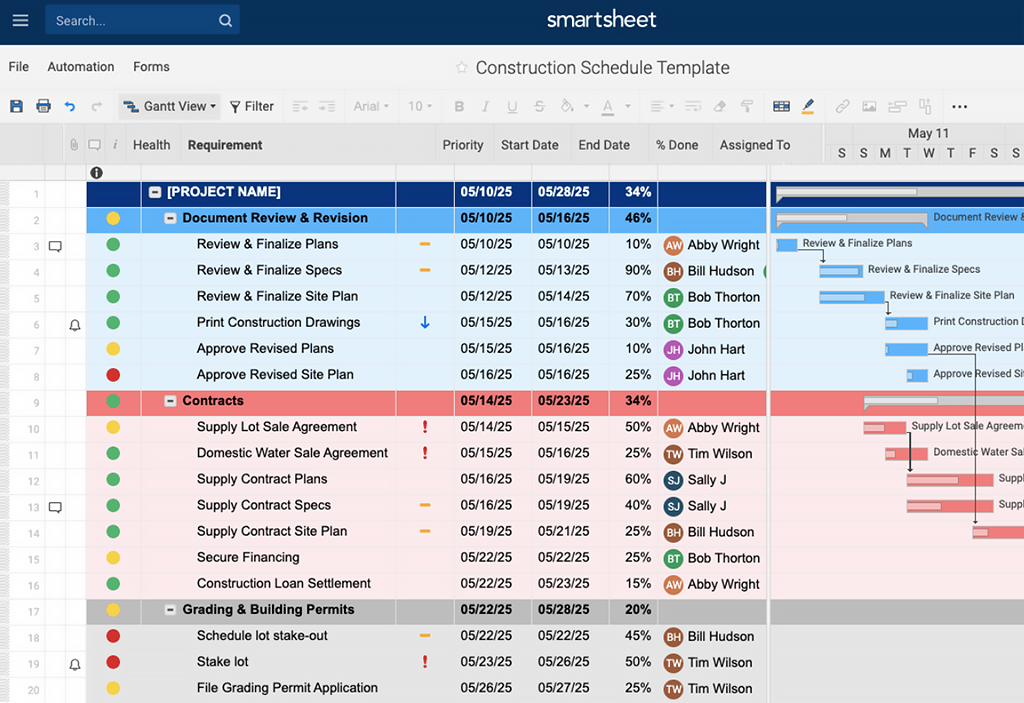
Source: https://smartsheet.com
Smartsheet is a well-regarded option among project management software for the construction industry, blending a familiar spreadsheet-like interface with essential task management tools. It’s designed for users who thrive in a grid-based environment, offering a structured approach that appeals to construction teams transitioning from tools like Excel. Smartsheet is a practical choice for builders and contractors seeking an accessible way to organize projects and track progress.
Smartsheet Overview and Features
Smartsheet delivers a straightforward platform that doubles as construction management software, focusing on a grid-centric design with added collaboration features. Its intuitive layout makes it easy to adopt, providing a reliable solution for project management for construction projects. Here’s what Smartsheet offers:
- Grid View: Manage tasks in a spreadsheet format with columns for assignees, due dates, statuses, and custom fields.
- Gantt Charts: Visualize project timelines and dependencies, perfect for scheduling construction phases.
- Attachments: Upload files like blueprints or permits directly to tasks for centralized access.
- Automation: Set simple alerts or reminders (e.g., notify teams of upcoming deadlines) in the free tier.
- Card View: Switch to a Kanban-style board to track tasks by stage, such as “Pending” or “Complete.”
- Integrations: Sync with Microsoft 365, Google Workspace, and Slack to enhance workflow connectivity.
Smartsheet’s strength is its familiarity, making it a solid pick among project management tools for construction for those comfortable with spreadsheets. The mix of grid and visual views provides flexibility, while basic automation keeps projects moving. It’s a tool that bridges traditional planning with modern construction project tracking software needs.
Smartsheet Pros and Cons
Smartsheet offers a balanced feature set with some limitations. Here’s a look at its advantages and drawbacks:
Pros
- Intuitive spreadsheet layout reduces the learning curve for construction teams.
- Gantt charts support detailed scheduling for building projects.
- File attachments keep plans and docs organized within the grid.
- Basic automation streamlines task updates and notifications.
- Collaboration features like commenting work well for small crews.
- Integrates with common tools to support office workflows.
Cons
- Free plan limits to one user and two sheets, restricting team use.
- Only 500MB storage in the free version, a cap for larger projects.
- No advanced construction-specific features like daily logs or cost tracking.
- Lacks robust Kanban functionality compared to dedicated tools.
- Paid plans required for multi-user collaboration.
- Mobile features are basic, less ideal for field teams.
These points highlight Smartsheet’s appeal as a familiar option for management software for construction and its constraints for broader construction needs.
Smartsheet Pricing & Free Version
Smartsheet’s free plan supports one user with two sheets, basic automation, and 500MB storage — suitable for solo contractors testing project management software for builders. Paid plans start at $7 per user/month, offering unlimited sheets, 20GB storage, and team features, making it a viable choice for growing construction firms.
4. Procore
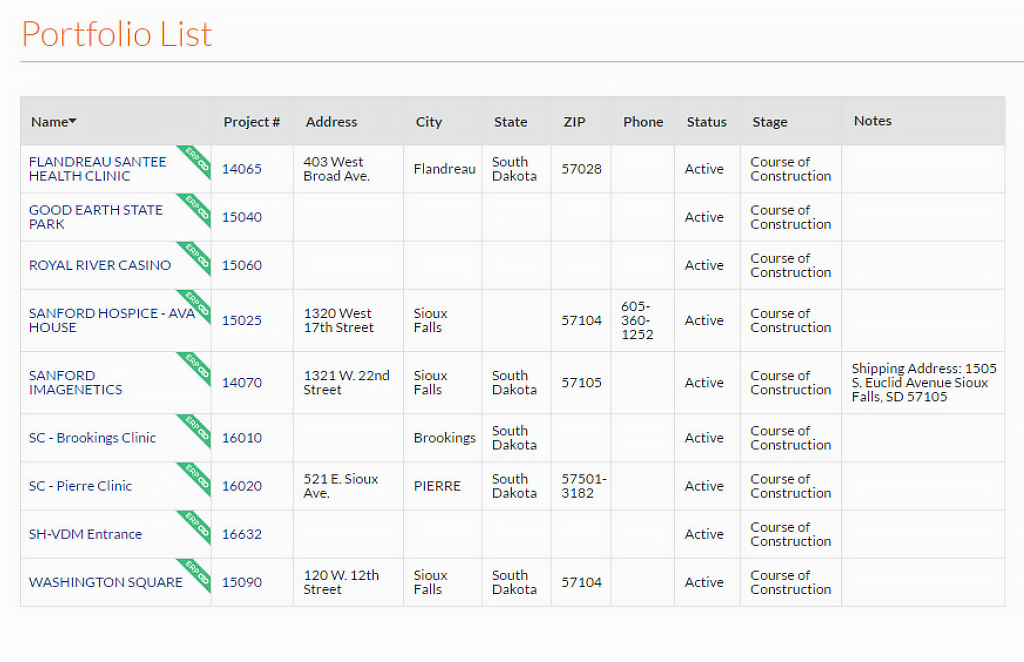
Source: https://www.procore.com/
Procore stands out as a leading choice among construction management software solutions, built specifically to meet the demands of the construction industry. It offers a comprehensive platform that connects office and field teams, appealing to builders who need robust tools for managing complex projects. Procore is widely recognized by construction firms looking for a specialized system to streamline workflows and ensure project success.
Procore Overview and Features
Procore excels as a top-tier option in project management software for construction, delivering a feature-rich environment tailored to the industry’s unique needs. Its design prioritizes real-time coordination and detailed oversight, making it a powerful tool for construction project management. Here’s what Procore includes:
- Project Tracking: Monitor tasks, RFIs (Requests for Information), and submittals to keep projects on schedule.
- Financial Tools: Manage budgets, invoices, and change orders for accurate cost control.
- Drawings: Upload, annotate, and share plans in real-time, ensuring teams work from the latest versions.
- Mobile Access: Field-friendly tools allow on-site updates and photo documentation.
- Reporting: Generate detailed reports on project health, timelines, and performance metrics.
- Integrations: Sync with QuickBooks, Bluebeam, and other industry-standard software.
Procore’s strength lies in its construction-specific focus, making it a standout among apps for construction project management. Its mobile capabilities bridge the gap between job sites and offices, while financial and reporting tools provide the depth needed for project management in construction projects. It’s a platform designed to handle the full scope of building challenges.
Procore Pros and Cons
Procore offers a robust set of features with some trade-offs. Here’s a breakdown of its advantages and limitations:
Pros
- Tailored specifically for construction workflows, from planning to closeout.
- Strong mobile app enhances field team productivity and communication.
- Comprehensive financial tools track costs and manage budgets effectively.
- Real-time drawing updates reduce errors and delays on-site.
- Detailed reporting provides actionable insights for project control.
- Wide range of integrations supports existing construction software ecosystems.
Cons
- No free plan available, limiting access for smaller teams or trials.
- Steep learning curve can slow adoption for less tech-savvy crews.
- Pricing is high, often out of reach for small contractors.
- Overkill for simple or small-scale construction projects.
- Mobile features rely on consistent internet connectivity.
- Initial setup and customization can be time-consuming.
These points underscore Procore’s power as a construction industry management software and its challenges for certain users.
Procore Pricing & Free Version
Procore does not offer a free version, positioning it as a premium choice among construction project management software programs. Pricing is custom and requires a quote, typically starting in the hundreds per month, tailored to project size and team needs — best suited for established firms with complex requirements.
5. Buildertrend

Source: https://buildertrend.com/
Buildertrend is a prominent name among construction project management software solutions, tailored specifically for home builders, remodelers, and specialty contractors. Known for its cloud-based platform, it offers a comprehensive approach to managing construction workflows, appealing to teams who value centralized communication and resource tracking. Buildertrend is a go-to choice for construction professionals seeking an all-in-one tool to streamline projects and enhance client interactions.
Buildertrend Overview and Features
Buildertrend ranks high among software for construction management, providing a robust set of tools designed to handle the full scope of residential building projects. Its user-friendly design makes it accessible, offering practical solutions for project management for building construction. Here’s what Buildertrend includes:
- Scheduling: Create detailed timelines and adjust tasks on the go to keep projects on track.
- Client Portal: Share real-time updates, documents, and progress with clients for transparency.
- Estimates: Build and manage bids with historical data for accurate cost projections.
- Daily Logs: Record on-site activities, weather updates, and crew progress seamlessly.
- Time Clock: Track employee hours with geofencing for precise labor management.
- Integrations: Sync with QuickBooks, Xero, and other tools to streamline financial workflows.
Buildertrend’s strength lies in its focus on residential construction, making it a top pick among project management software for builders. The client portal fosters collaboration, while scheduling and daily logs ensure field and office teams stay aligned. It’s a platform that enhances efficiency across construction management apps.
Buildertrend Pros and Cons
Buildertrend offers a well-rounded feature set with some limitations. Here’s a look at its advantages and drawbacks:
Pros
- Client portal enhances communication and client satisfaction.
- Comprehensive scheduling tools keep projects organized and on time.
- Daily logs provide clear visibility into on-site progress.
- Mobile app supports field access and real-time updates.
- Intuitive interface is easy for teams to adopt.
- Strong integration options with accounting software.
Cons
- No free plan available, only a trial period.
- Pricing can be steep for small contractors or startups.
- Limited customization compared to more flexible platforms.
- Learning curve for some advanced features.
- Estimating tools may lack depth for complex bids.
- Best suited for residential rather than large commercial projects.
These points highlight Buildertrend’s appeal as a construction management platform and its boundaries for certain use cases.
Buildertrend Pricing & Free Version
Buildertrend does not offer a free version but provides a 30-day money-back guarantee, making it a low-risk option to test among construction project management tools. Pricing starts at $99/month for small teams, scaling to $399/month for larger firms with advanced features like financial tracking and client portals—ideal for established builders seeking robust software for construction projects.
6. CoConstruct
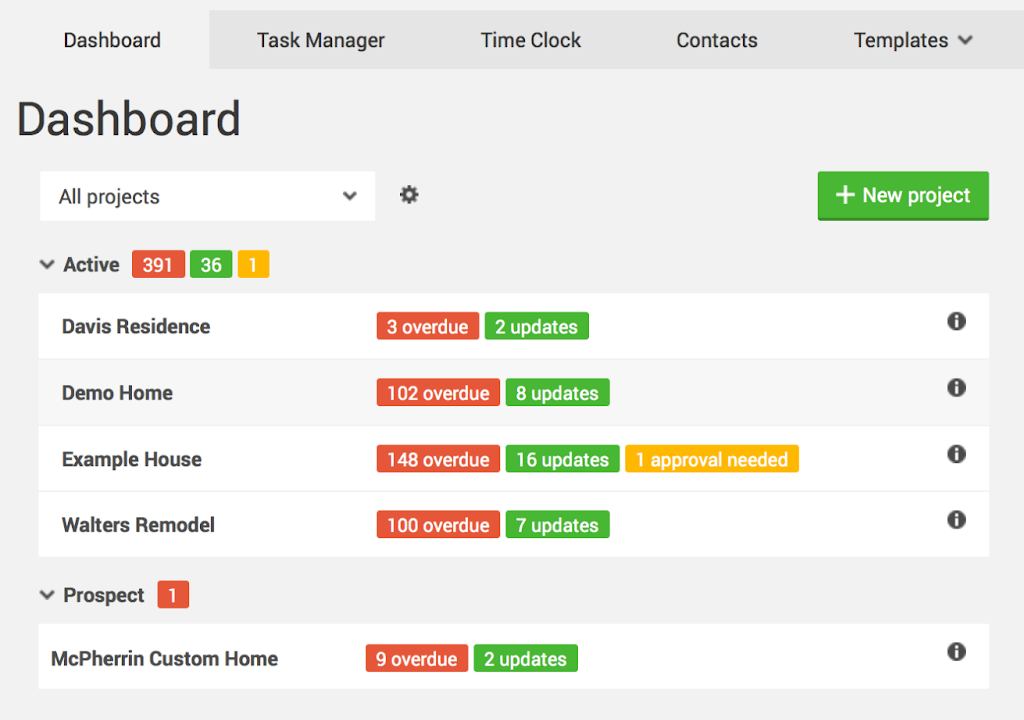
Source: https://www.coconstruct.com/
CoConstruct is a specialized option among construction management software programs, designed with custom home builders and remodelers in mind. It combines project management with client engagement tools, appealing to contractors who prioritize seamless coordination and client satisfaction. CoConstruct is a favored choice for construction professionals seeking a tailored platform to manage residential projects efficiently.
CoConstruct Overview and Features
CoConstruct stands out as a strong contender in project management software for construction projects, offering a focused set of tools to streamline building workflows. Its intuitive design caters to the needs of smaller construction teams, providing practical solutions for construction industry project management software. Here’s what CoConstruct includes:
- Project Planning: Schedule tasks, set milestones, and track progress with detailed timelines.
- Budgeting: Monitor costs, manage change orders, and maintain financial transparency.
- Client Communication: A dedicated portal lets clients view updates, selections, and approvals.
- Mobile Tools: Access plans, schedules, and logs on-site with a field-friendly app.
- Proposals: Generate bids and estimates quickly with preloaded templates.
- Integrations: Connect with QuickBooks and other accounting tools for unified financials.
CoConstruct’s strength is its residential focus, making it a top pick among apps for construction management. The client portal enhances collaboration, while budgeting and mobile tools keep projects on track. It’s a platform that simplifies project management for construction industry professionals, particularly in custom builds and renovations.
CoConstruct Pros and Cons
CoConstruct offers a balanced feature set with some limitations. Here’s a breakdown of its advantages and drawbacks:
Pros
- Client portal fosters trust with real-time project visibility.
- Detailed budgeting tools help manage costs effectively.
- Mobile app supports field teams with on-site access.
- Easy-to-use proposal system speeds up bidding.
- Intuitive design suits small to medium-sized teams.
- Reliable customer support aids quick onboarding.
Cons
- No free plan available, limiting trial options.
- Pricing may feel high for solo contractors or startups.
- Less suited for large-scale commercial projects.
- Customization options are somewhat restricted.
- Reporting features lack advanced analytics.
- Focused primarily on residential construction needs.
These points showcase CoConstruct’s strengths as a construction management platform and its constraints for broader applications.
CoConstruct Pricing & Free Version
CoConstruct does not offer a free tier, positioning it as a premium choice among construction project management apps. Pricing starts at $199/month for basic features, with custom plans available for additional users or advanced tools—best suited for established builders looking for dedicated software for construction contractors.
7. Contractor Foreman
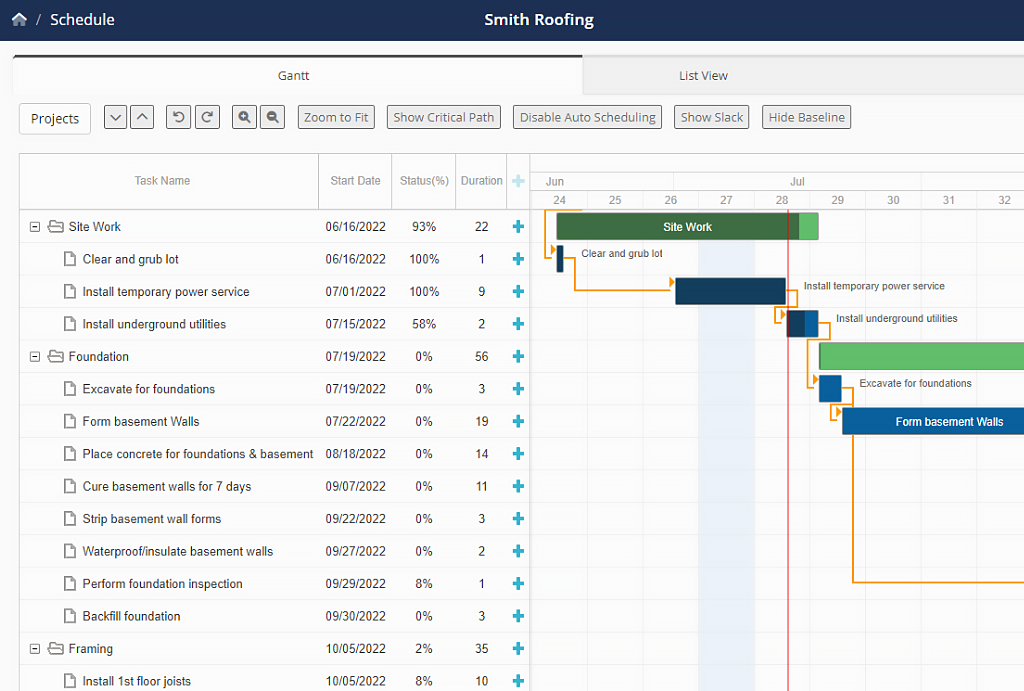
Source: https://contractorforeman.com/
Contractor Foreman is a budget-friendly option among construction management software solutions, crafted for small to medium contractors looking for an all-in-one tool. It stands out with its comprehensive feature set at an accessible price, appealing to builders who want to streamline project oversight without breaking the bank. Contractor Foreman is widely used by trade professionals seeking an affordable yet effective way to manage construction workflows.
Contractor Foreman Overview and Features
Contractor Foreman offers a robust platform that ranks high among project management software for contractors, delivering tools to handle everything from estimates to daily logs. Its straightforward design makes it approachable, providing practical solutions for project management in construction projects. Here’s what Contractor Foreman includes:
- Scheduling: Plan tasks and assign crews with drag-and-drop Gantt charts for clear timelines.
- Estimates: Create bids with customizable templates, syncing seamlessly with project costs.
- Daily Logs: Track on-site progress, weather, and incidents with easy mobile entry.
- Financials: Manage invoices, payments, and budgets with QuickBooks integration.
- Time Tracking: Monitor crew hours with GPS-enabled time cards for accuracy.
- Mobile App: Access projects, logs, and docs on-site with a field-ready interface.
Contractor Foreman’s strength is its value, making it a compelling choice among construction project management tools. It centralizes key functions like scheduling and financial tracking, while the mobile app ensures field teams stay connected. It’s a software for construction management that balances affordability with functionality for growing businesses.
Contractor Foreman Pros and Cons
Contractor Foreman provides a solid feature set with some trade-offs. Here’s a look at its advantages and limitations:
Pros
- Affordable pricing suits small to medium contractors.
- Comprehensive tools cover scheduling, logs, and finances.
- Mobile app supports real-time field updates.
- QuickBooks integration simplifies accounting tasks.
- Intuitive design eases adoption for busy teams.
- Unlimited projects without extra fees.
Cons
- No free plan, only a 30-day trial period.
- Advanced features locked behind higher-tier plans.
- Reporting options are basic, lacking depth.
- Mobile app can lag with poor connectivity.
- Setup requires time to fully customize.
- Less suited for large-scale commercial jobs.
These points highlight Contractor Foreman’s appeal as a cost-effective construction management platform and its limits for complex needs.
Contractor Foreman Pricing & Free Version
Contractor Foreman offers no free version but provides a 30-day free trial, making it a low-risk option to explore among project management software for construction industry users. Pricing starts at $49/month for the entire company (not per user), including core features and unlimited projects — ideal for small contractors seeking value-driven software for construction projects.
8. Fieldwire
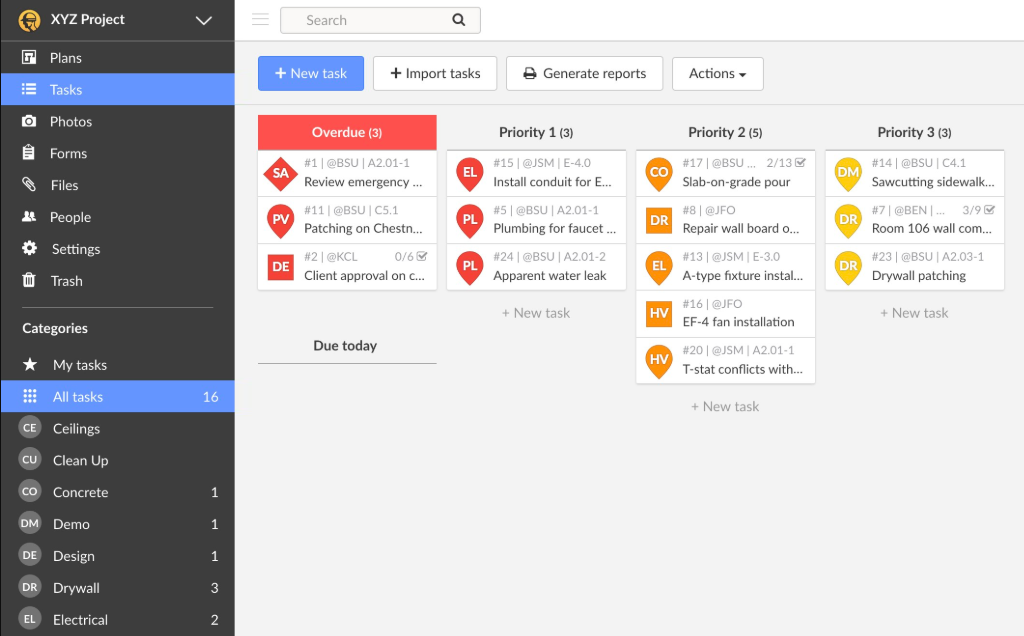
Source: https://www.fieldwire.com/
Fieldwire is a field-focused contender among construction management software platforms, designed to empower on-site teams with real-time jobsite coordination. It’s known for its mobile-first approach, appealing to contractors and foremen who need quick access to plans and tasks directly from the field. Fieldwire is a popular choice for construction teams seeking a practical tool to bridge the gap between office planning and on-site execution.
Fieldwire Overview and Features
Fieldwire stands out as a reliable option in project management software for construction industry users, offering a streamlined set of tools tailored for jobsite efficiency. Its intuitive design prioritizes field usability, making it a go-to solution for construction project tracking software. Here’s what Fieldwire includes:
- Task Management: Assign, prioritize, and track tasks with due dates and locations for clear accountability.
- Plan Viewing: Access and annotate drawings on any device, with offline mode for remote sites.
- Checklists: Create inspection and punch list templates to ensure quality and compliance.
- Photos: Document progress with photos and videos linked to tasks or plans.
- Reports: Export automated reports for daily updates or project handovers.
- Mobile App: A robust app connects field teams with real-time updates from anywhere.
Fieldwire’s strength is its jobsite-centric design, making it a top pick among apps for construction project management. The mobile app excels in delivering plans and tasks to the field, while photo documentation reduces disputes. It’s a tool that enhances project management for construction projects by keeping crews aligned and informed.
Fieldwire Pros and Cons
Fieldwire offers a focused feature set with some limitations. Here’s a breakdown of its advantages and drawbacks:
Pros
- Free plan supports small teams with core features.
- Exceptional mobile app for field usability.
- Easy plan markup and sharing in real time.
- Photo integration simplifies progress tracking.
- Intuitive interface requires minimal training.
- Offline mode aids remote job sites.
Cons
- Free plan caps at 5 users and 3 projects.
- Limited office-focused features like budgeting.
- Reporting lacks advanced customization options.
- Fewer integrations compared to competitors.
- Scales less effectively for large projects.
- No native financial tracking tools.
These points highlight Fieldwire’s strengths as a field-oriented construction management app and its boundaries for broader project needs.
Fieldwire Pricing & Free Version
Fieldwire’s free plan supports up to 5 users and 3 projects with basic features, making it a strong starter among free construction project management apps. Paid plans start at $39 per user/month (billed annually), adding unlimited projects, advanced reporting, and RFI tracking — suitable for growing teams needing robust software for construction management.
9. Autodesk Construction Cloud
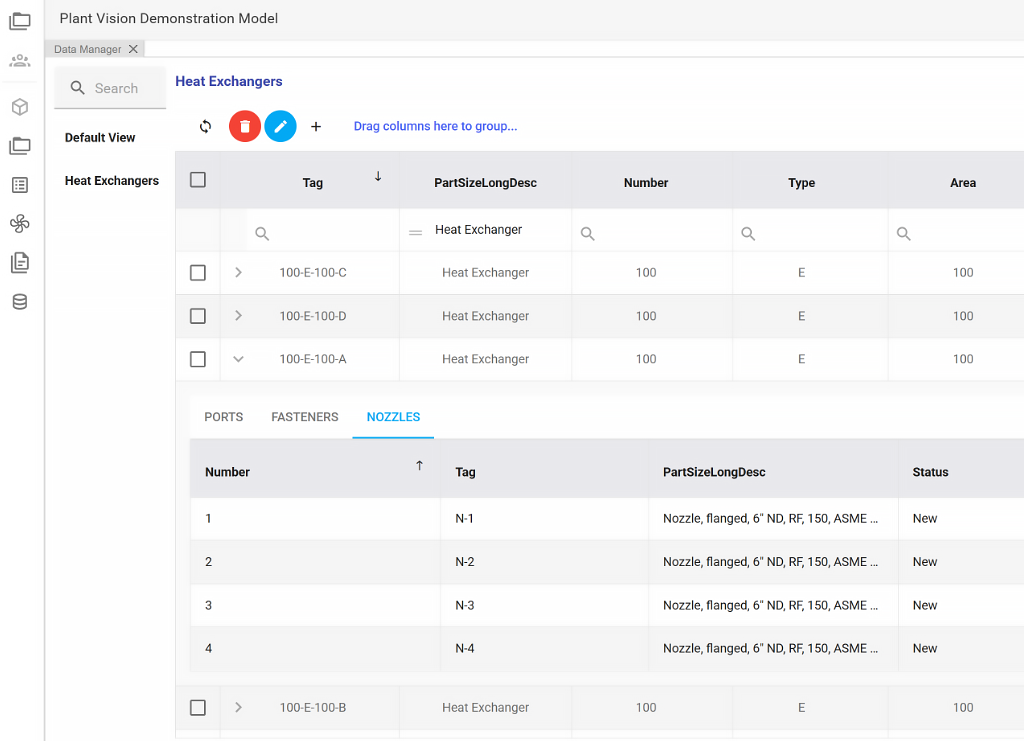
Source: https://construction.autodesk.com/
Autodesk Construction Cloud is a powerhouse among construction management software solutions, engineered to connect workflows across the entire construction lifecycle. Known for its integration with design tools, it appeals to firms that rely on Building Information Modeling (BIM) and need a unified platform for complex projects. Autodesk Construction Cloud is a preferred choice for construction professionals seeking advanced technology to manage large-scale builds efficiently.
Autodesk Construction Cloud Overview and Features
Autodesk Construction Cloud ranks high among project management software for the construction industry, offering a sophisticated set of tools to streamline planning, execution, and handover. Its design emphasizes data-driven coordination, making it a robust solution for construction project management software. Here’s what Autodesk Construction Cloud includes:
- BIM Integration: Manage 3D models and collaborate on designs with real-time updates.
- Document Control: Centralize plans, specs, and revisions in a single, searchable hub.
- Project Tracking: Monitor tasks, schedules, and costs with detailed dashboards.
- Field Tools: Access drawings and logs via a mobile app for on-site efficiency.
- Analytics: Leverage data insights to optimize performance and predict risks.
- Integrations: Sync with Autodesk products (e.g., Revit) and external tools like Procore.
Autodesk Construction Cloud’s strength lies in its technical depth, making it a standout among construction software project management options. Its BIM capabilities enhance design-to-build transitions, while analytics provide foresight for project control. It’s a platform tailored for firms needing comprehensive tools for construction management.
Autodesk Construction Cloud Pros and Cons
Autodesk Construction Cloud offers a high-end feature set with some trade-offs. Here’s a look at its advantages and limitations:
Pros
- Seamless BIM integration for design-heavy projects.
- Robust document management keeps plans organized.
- Advanced analytics drive informed decision-making.
- Mobile tools support field teams effectively.
- Scales well for large, complex construction projects.
- Strong ties with industry-standard design software.
Cons
- No free plan available, limiting accessibility.
- High cost can deter small firms or contractors.
- Steep learning curve for non-technical users.
- Best suited for teams already using Autodesk tools.
- Requires reliable internet for full functionality.
- Overkill for small or simple builds.
These points underscore Autodesk Construction Cloud’s prowess as a construction management platform and its challenges for certain users.
Autodesk Construction Cloud Pricing & Free Version
Autodesk Construction Cloud offers no free tier, positioning it as a premium choice among construction project management software programs. Pricing is custom, often starting at $500/year per user (depending on modules like BIM 360 or Build), tailored to project scope — ideal for established firms seeking top-tier software for construction projects.
10. Monday.com
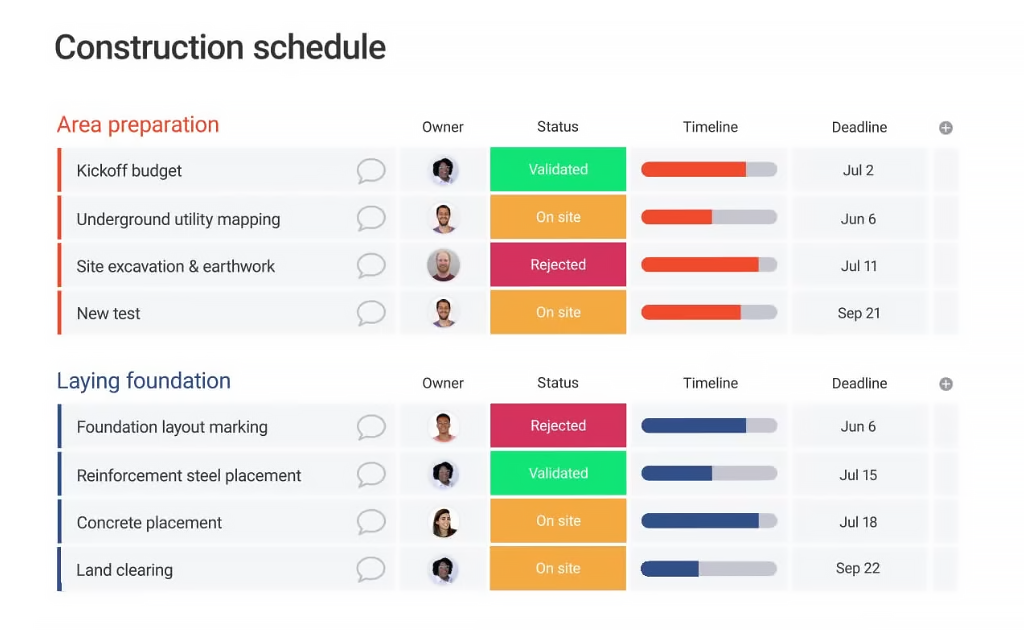
Source: https://monday.com/
Monday.com is a versatile player among project management software for construction projects, known for its visually appealing and customizable interface. It offers a flexible approach to task and team management, appealing to construction teams who value adaptability over industry-specific features. Monday.com is widely used by builders seeking an intuitive platform to organize workflows and enhance collaboration.
Monday.com Overview and Features
Monday.com shines as a dynamic option in construction management software, providing a broad toolkit that can be tailored to building projects. Its user-friendly design makes it accessible, offering practical solutions for project management for construction industry needs. Here’s what Monday.com includes:
- Boards: Create customizable boards to track tasks, phases, or resources visually.
- Automation: Set up rules to automate updates, reminders, or status changes.
- Timeline: Plan projects with a Gantt-like view for clear scheduling.
- File Storage: Upload and share documents like plans or permits within boards.
- Collaboration: Use built-in comments and mentions for team communication.
- Integrations: Connect with Slack, Google Drive, and Zapier for workflow syncing.
Monday.com’s strength is its visual flexibility, making it a solid choice among construction project management tools. The board system provides a clear overview, while automation reduces manual work. It’s a platform that adapts well to project management for building construction, even as a general-purpose tool.
Monday.com Pros and Cons
Monday.com offers a balanced feature set with some limitations. Here’s a breakdown of its advantages and drawbacks:
Pros
- Free plan available for small teams with basic features.
- Visually engaging interface boosts team engagement.
- Automation streamlines repetitive tasks efficiently.
- Flexible boards suit various construction workflows.
- Collaboration tools keep teams connected.
- Easy to learn, even for less tech-savvy users.
Cons
- Free plan limits to 2 users, restricting team use.
- Lacks native construction-specific features like daily logs.
- Storage is capped at 500MB in the free tier.
- Gantt view is basic compared to specialized tools.
- Paid plans can get pricey for larger crews.
- Requires customization for optimal construction use.
These points highlight Monday.com’s appeal as a general-purpose construction management app and its boundaries for industry-specific needs.
Monday.com Pricing & Free Version
Monday.com’s free plan supports up to 2 users with unlimited boards and basic features, making it a viable starter among free project management software for builders. Paid plans start at $8 per user/month (billed annually), adding unlimited storage, advanced automation, and timeline views—suitable for scaling teams needing software for construction management.
Benefits of Construction Project Management Software
Managing construction projects can feel like herding cats—every task, team, and resource needs to align perfectly to avoid chaos. Construction project management software steps in as a vital tool, transforming how builders plan, track, and deliver projects. From small renovations to sprawling commercial builds, these platforms offer tangible advantages that boost efficiency and keep projects on course. Here’s a look at the key benefits these tools bring to the table.
- Improved Efficiency: Automates repetitive tasks like scheduling and progress updates, saving hours of manual work for construction teams.
- Enhanced Communication: Centralizes updates and messages, ensuring field crews and office staff stay in sync on project details.
- Better Cost Control: Tracks budgets and flags overruns in real time, helping keep projects financially on track.
- Centralized Documentation: Stores plans, permits, and contracts in one place, reducing the risk of lost or outdated files.
- Real-Time Tracking: Provides instant visibility into task status and milestones, critical for meeting tight construction deadlines.
- Reduced Errors: Minimizes miscommunication and rework by keeping everyone aligned with accurate, up-to-date data.
- Scalability: Adapts to projects of any size, from small residential jobs to large-scale construction industry management software needs.
These benefits make construction management software a game-changer for builders and contractors. By streamlining workflows, enhancing oversight, and cutting down on costly mistakes, these tools empower teams to deliver projects faster and more profitably. Whether you’re a solo contractor or a large firm, investing in the right project management software for construction can elevate your business and keep clients coming back.
FAQ
What is Construction Project Management Software?
Construction project management software is a specialized tool designed to help construction professionals plan, execute, and monitor projects efficiently.
It includes features like task management, scheduling, budgeting, resource allocation, and document management, tailored to the unique needs of the construction industry.
Why do Construction Companies Need Project Management Software?
Construction projects are complex, involving multiple stakeholders, tight deadlines, and ever-changing requirements.
Project management software helps streamline workflows, improve communication, track progress, manage budgets, and ensure compliance with safety and regulatory standards. It reduces the risk of delays, cost overruns, and miscommunication.
How does Construction Project Management Software Improve Collaboration?
These tools provide centralized platforms where team members, stakeholders, and clients can communicate, share documents, and track progress in real-time.
Features like task assignments, comments, and notifications ensure everyone stays informed and aligned.
Can Construction Project Management Software Help with Budgeting?
Yes, most construction project management tools include budgeting and financial management features.
They allow you to track project costs, manage expenses, and generate financial reports, helping you stay within budget and avoid cost overruns.
